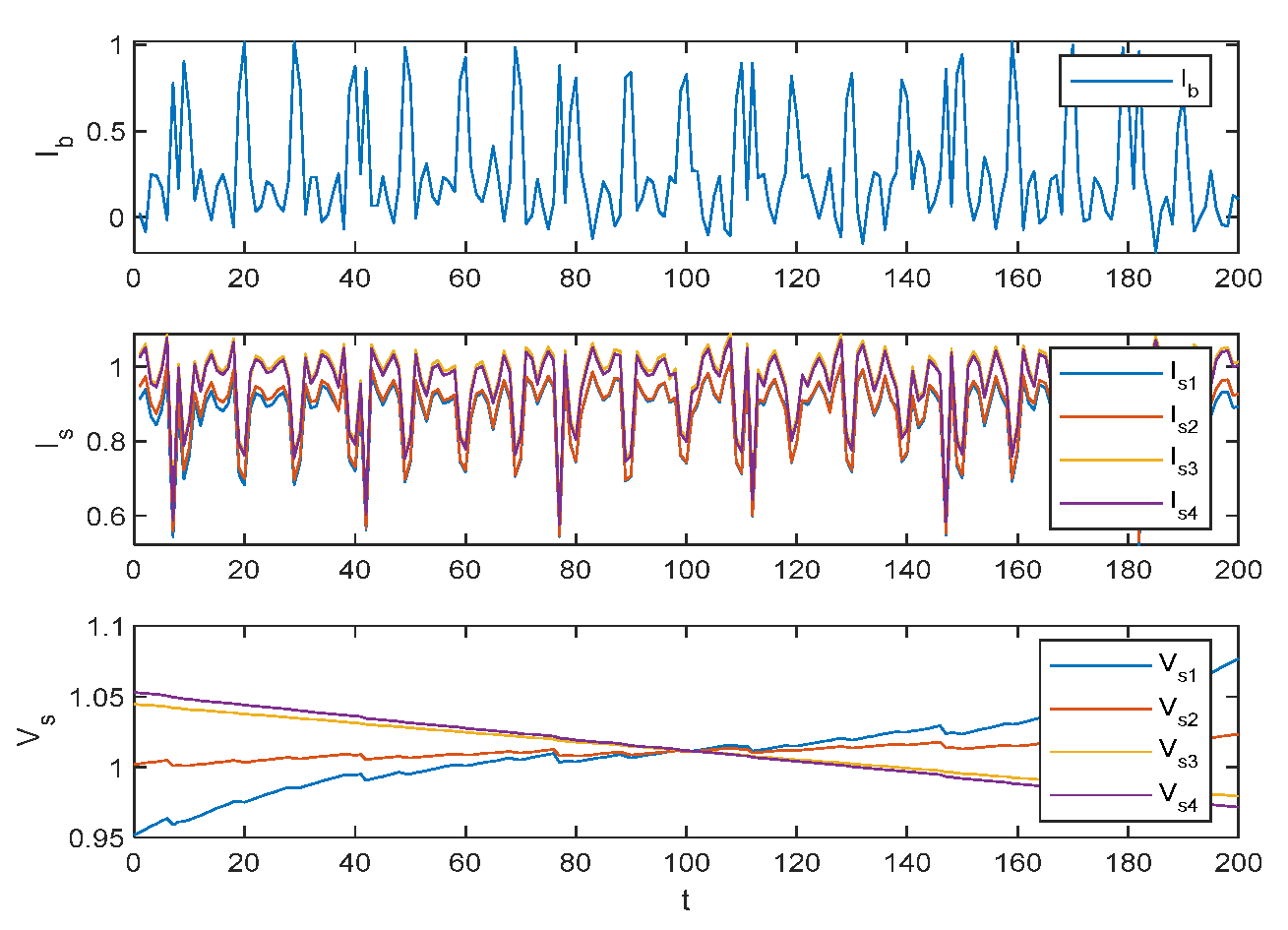Energy Optimization of Hybrid Energy Storage System (HESS) for Hybrid Electric Vehicle (HEV) †
Abstract
:1. Introduction
2. Methodology
2.1. HESS Energy Optimization
2.1.1. Minimization of Magnitude/Fluctuation of Battery Current (P1)
2.1.2. Minimization of the Energy Loss (P2)
2.1.3. Dual-Objective Function Minimization (P3)
3. Results
4. Conclusions
Conflicts of Interest
References
- Mets, K.; Verschueren, T.; Haerick, W.; Develder, C.; De Turck, F. Optimizing smart energy control strategies for plug-in hybrid electric vehicle charging. In Proceedings of the 2010 IEEE/IFIP Network Operations and Management Symposium Workshops, Osaka, Japan, 19–23 April 2010; IEEE: Piscataway, NJ, USA, 2010. [Google Scholar]
- Mohamed, D.; Noshin, O.; Bavo, V.; Van den Bossche, P.; Van Mierlo, J. Battery Models Parameter Estimation based on Matlab:Simulink. In Proceedings of the The 25th World Battery, Hybrid and Fuel Cell Electric Vehicle Symposium & Exhibition, Shenzhen, China, 5–9 November 2010. [Google Scholar]
- Zhang, C.; Liu, Y.; Qian, Y.; Bao, H. An optimization framework of electric vehicle (EV) batteries for product eco-design. Procedia CIRP 2020, 90, 366–371. [Google Scholar] [CrossRef]
- Kim, J.; Lee, D.; Lee, J.; Kim, C. Optimization for maximum specific energy density of a lithiumion battery using progressive quadratic response surface method and design of experiments. Sci. Rep. 2020, 10, 15586. [Google Scholar] [CrossRef] [PubMed]
- Choi, M.; Kim, S.; Seung, W.S. Energy Management Optimization in a Battery/Supercapacitor Hybrid Energy Storage System. IEEE Trans. Smart Grid 2012, 3, 463–472. [Google Scholar] [CrossRef]
- Choi, M.; Lee, J.; Seo, S. Real-Time Optimization for Power Management Systems of a Battery/Supercapacitor Hybrid Energy Storage System in Electric Vehicles. IEEE Trans. Veh. Technol. 2014, 63, 3600–3611. [Google Scholar] [CrossRef]
- Choi, M. Robust energy management of a battery/supercapacitor Hybrid Energy Storage System in an electric vehicle. In Proceedings of the 2012 IEEE International Electric Vehicle Conference, Greenville, SC, USA, 4–8 March 2012. [Google Scholar]
- Hoke, A.; Brissette, A.; Maksimovic, D.; Pratt, A.; Smith, K. Electric vehicle charge optimization including effects of lithium-ion battery degradation. In Proceedings of the IEEE Vehicle Power and Propulsion Conference, Chicago, IL, USA, 6–9 September 2011. [Google Scholar] [CrossRef]



Publisher’s Note: MDPI stays neutral with regard to jurisdictional claims in published maps and institutional affiliations. |
© 2022 by the authors. Licensee MDPI, Basel, Switzerland. This article is an open access article distributed under the terms and conditions of the Creative Commons Attribution (CC BY) license (https://creativecommons.org/licenses/by/4.0/).
Share and Cite
Ilyas, U.; Khan, M.N.U.; Ashfaq, U.; Qaiser, I. Energy Optimization of Hybrid Energy Storage System (HESS) for Hybrid Electric Vehicle (HEV). Eng. Proc. 2021, 12, 75. https://doi.org/10.3390/engproc2021012075
Ilyas U, Khan MNU, Ashfaq U, Qaiser I. Energy Optimization of Hybrid Energy Storage System (HESS) for Hybrid Electric Vehicle (HEV). Engineering Proceedings. 2021; 12(1):75. https://doi.org/10.3390/engproc2021012075
Chicago/Turabian StyleIlyas, Usama, Muhammad Naqeeb Ullah Khan, Usama Ashfaq, and Irfan Qaiser. 2021. "Energy Optimization of Hybrid Energy Storage System (HESS) for Hybrid Electric Vehicle (HEV)" Engineering Proceedings 12, no. 1: 75. https://doi.org/10.3390/engproc2021012075
APA StyleIlyas, U., Khan, M. N. U., Ashfaq, U., & Qaiser, I. (2021). Energy Optimization of Hybrid Energy Storage System (HESS) for Hybrid Electric Vehicle (HEV). Engineering Proceedings, 12(1), 75. https://doi.org/10.3390/engproc2021012075




